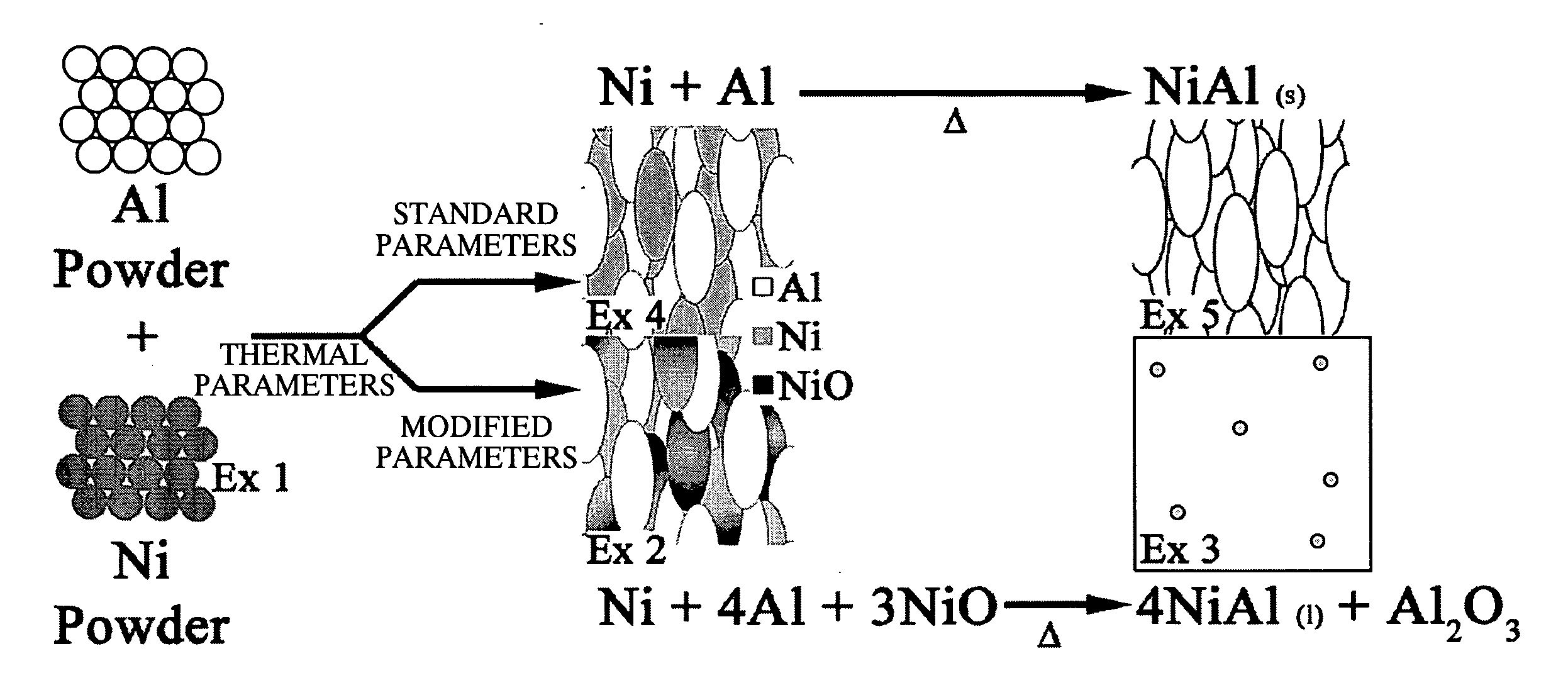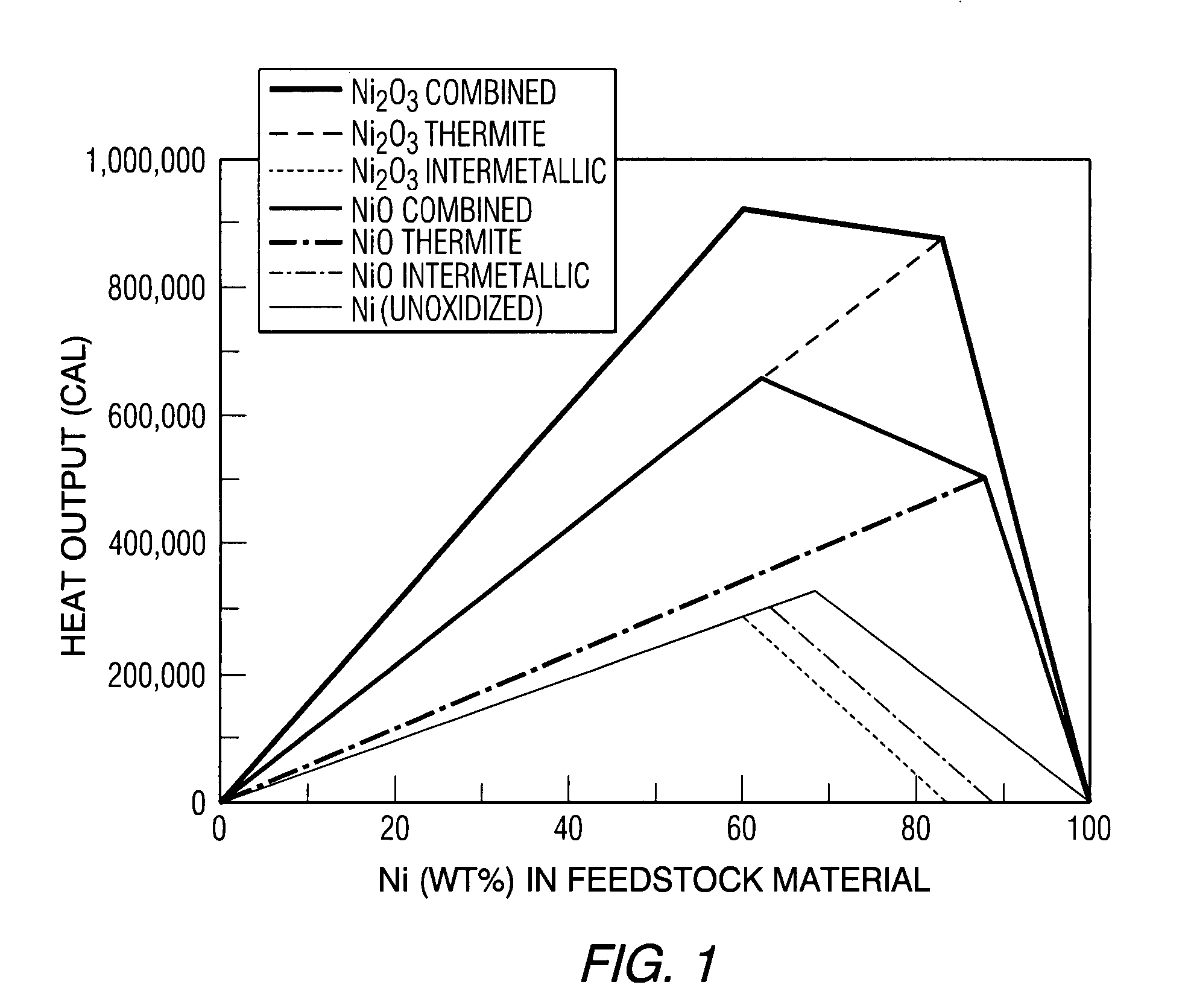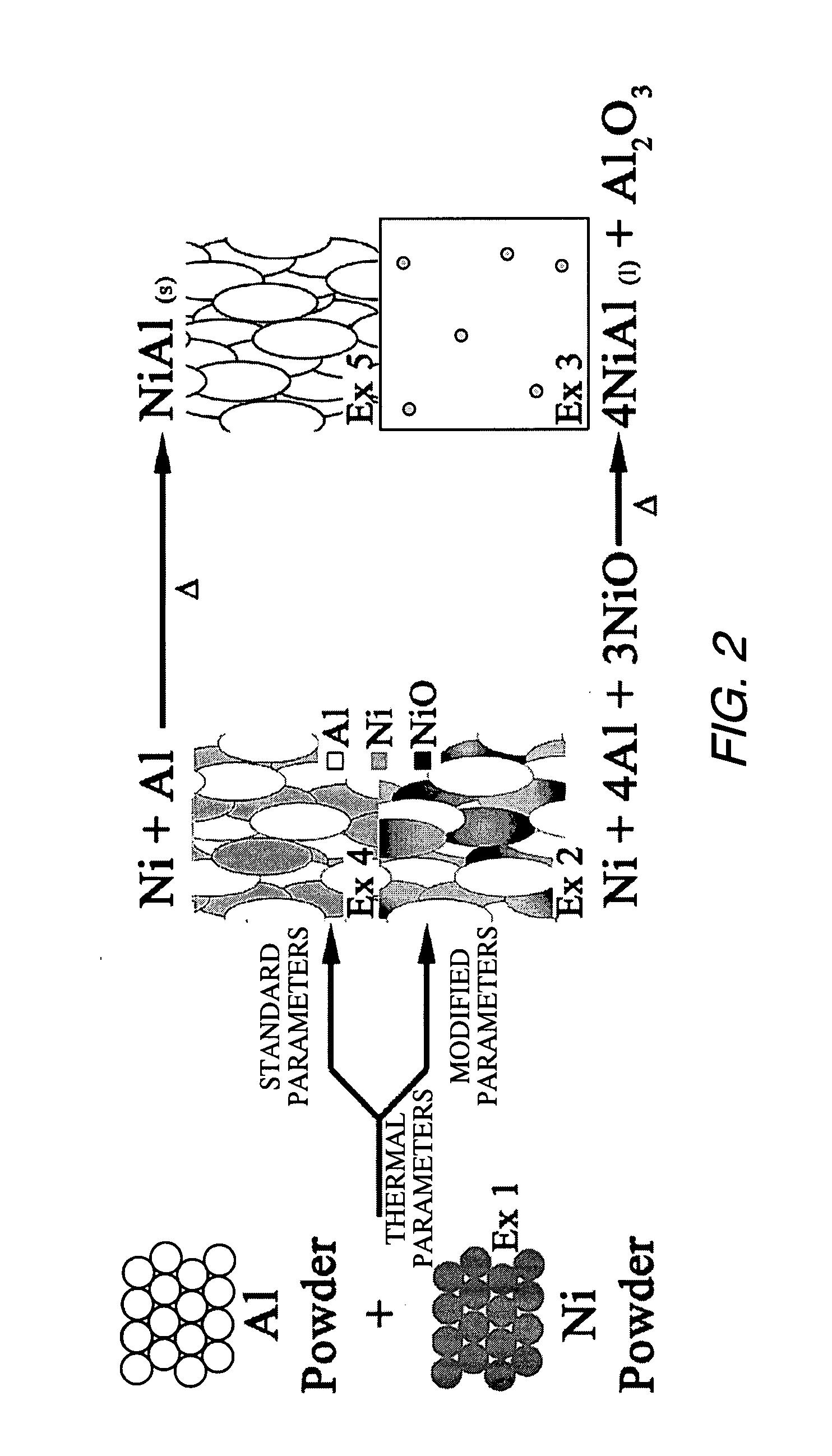Thermal deposition of reactive metal oxide/aluminum layers and dispersion strengthened aluminides made therefrom
- Summary
- Abstract
- Description
- Claims
- Application Information
AI Technical Summary
Benefits of technology
Problems solved by technology
Method used
Image
Examples
example 1
70 (wt %) Ni 30 (wt %) Al Mixed Powder
[0052] Example 1 is a stoichiometric mixture of Ni and Al powders. Both powders are commercially available thermal spray grade powders. The x-ray diffractogram demonstrates that the Ni powder (Sulzer Metco Ni 56F) was oxide free, FIG. 3.
example 2
Metastable Intermediary Material with High Oxide Content
[0053] Thermal spray technology is then used to consolidate the stoichiometric Ni—Al powder mixture of Example 1 into a reactive composite material. This composite is dense and is capable of bearing loads in excess of 12 ksi. Process parameters were selected to create a composite with a high nickel oxide (NiO) concentration. Creating a composite with a high concentration of NiO allows it to react through an energetic thermite reaction. This allows a higher temperature to be achieved during the reaction.
[0054] The XRD spectrum obtained from the high oxide content composite shows that the primary phases present are elemental Al, elemental Ni and nickel oxide (NiO), FIG. 4. SEM in back-scattered electron mode coupled with energy dispersive x-ray spectroscopy (EDS) was used to observe the distribution of the aluminum and nickel phases identified by XRD. The low magnification image (200×), FIG. 5, shows that material is fully cons...
example 3
[0057] NixAly Strengthened by a Dispersion of Alumina Microspheres
[0058] Heat is then applied to the reactive composites of Example 2 to initiate a self-sustaining exothermic reaction. As the DSC in FIG. 7 shows, this reaction initiates at 625° C. and is more energetic than the Ni—Al reaction that occurs between the mixed powders. This allows a fully molten state to be achieved because the reaction provides sufficient heat to melt the reacting species. The molten material is free flowing and can be readily cast in a mold. As the material cools, alumina (Al2O3) precipitates from the melt to form a dispersion of reinforcing microspheres in a nickel alumide (NixAly) matrix phase.
[0059] The XRD pattern obtained from this alloy is dominated by an Al—Ni alloy of ˜1:1 ratio and smaller peaks of alumina (Al2O3), FIG. 8. The reflections of the initial aluminum, nickel, and NiO phases that had been present in the intermediary material are absent in this spectrum. This indicates that these p...
PUM
| Property | Measurement | Unit |
|---|---|---|
| Fraction | aaaaa | aaaaa |
| Fraction | aaaaa | aaaaa |
| Temperature | aaaaa | aaaaa |
Abstract
Description
Claims
Application Information
 Login to View More
Login to View More - R&D
- Intellectual Property
- Life Sciences
- Materials
- Tech Scout
- Unparalleled Data Quality
- Higher Quality Content
- 60% Fewer Hallucinations
Browse by: Latest US Patents, China's latest patents, Technical Efficacy Thesaurus, Application Domain, Technology Topic, Popular Technical Reports.
© 2025 PatSnap. All rights reserved.Legal|Privacy policy|Modern Slavery Act Transparency Statement|Sitemap|About US| Contact US: help@patsnap.com



